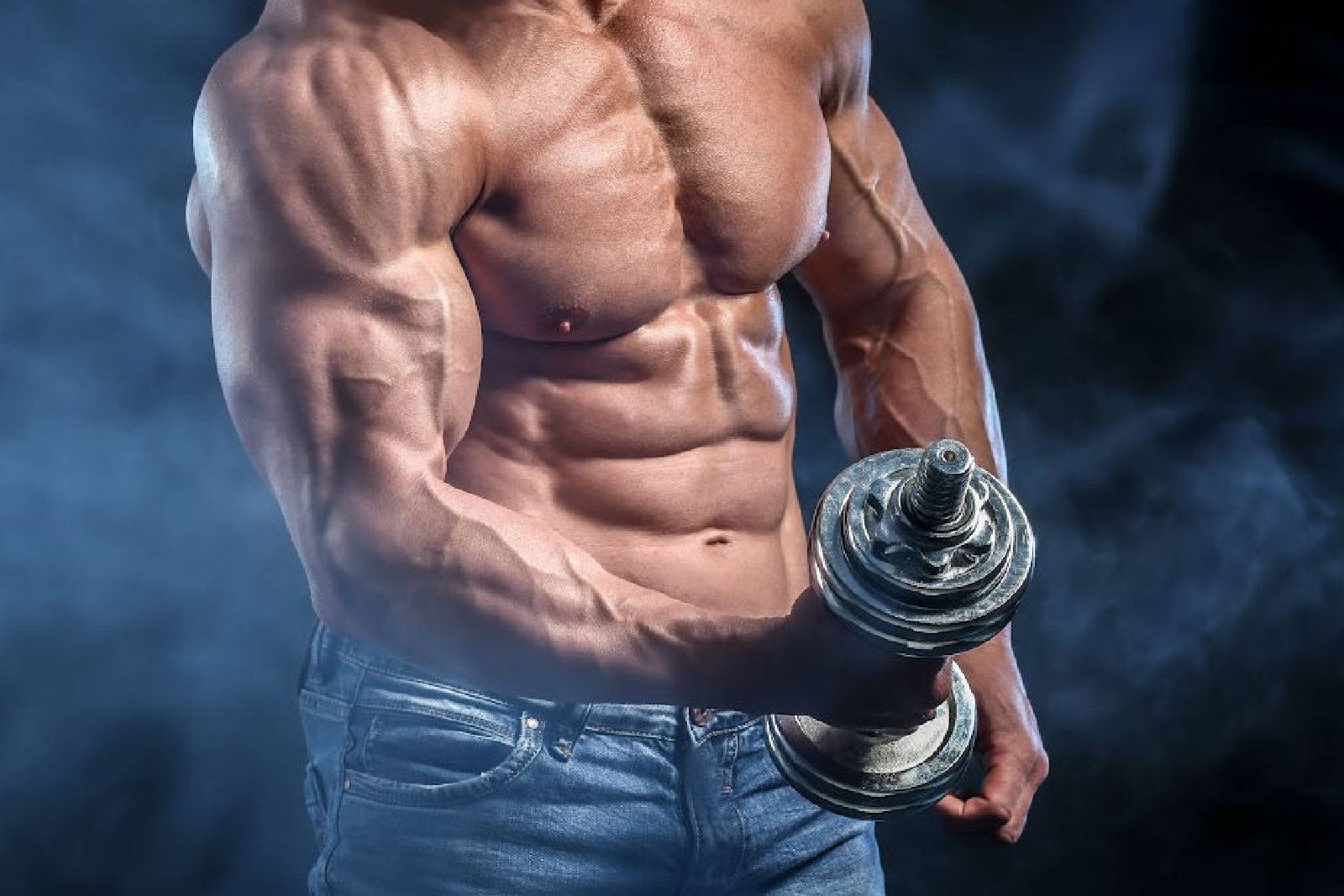
How to Develop a Grip of Steel
Grip strength is the degree of neurological and muscular force generated with the musculature of the hands, fingers, wrists and forearms.
It is absolutely critical to increased performance on your lifts in the gym, strength and muscle gains as well as overall health and well-being.
With these methods below, you can develop crushing vice-like grip strength and powerful forearms which will pay dividends in your daily life and all exercises!
Why is Grip Strength Important?
You would be hard pressed to look at all of your daily activities at home or work and not see how important grip strength is. It is obviously especially of critical importance in the gym - all of the progress on not just your deadlift, but all of your lifts can be halted in their tracks by a failing grip.
Grip training has carry-over to every sport, from martial arts to baseball to climbing. Your lifts are only as strong as your hands!
Beyond utility, there is a proven correlation between grip strength and mortality. This was actually a surprise to me when I first read about it and delving deeper into it found no shortage of peer-reviewed studies showing one’s grip strength to be a biomarker of aging!
Grip strength is also a reliably predictive factor in determining not just all-cause mortality, but also cardiovascular disease and cancer:
“We found that grip strength had a stronger association with all cause and cardiovascular disease mortality than do systolic blood pressure or total physical activity, and that the strength of associations for grip strength with incidence of cardiovascular disease was similar to that for systolic blood pressure and stronger than for total physical activity,” the authors concluded. “Grip strength may, therefore, be a useful method of identifying people with muscle weakness who are at high risk of a wide range of diseases and who might benefit from further health assessments of risk for vascular and non-vascular outcomes.”
BMJ 2018; 361 doi: https://doi.org/10.1136/bmj.k1651 (Published 08 May 2018)Cite this as: BMJ 2018;361:k1651
Having a strong grip and development of wrist and forearm strength also correlates with shoulder, rotator cuff and elbow health. There is a neurological connection between the grip and the four main muscles that comprise the “rotator cuff“ at the back of the shoulder - the muscles which rotate the upper arm.
A strong grip primes the shoulder to anticipate the load. Also it has been found the reverse to be true - a shoulder injury can diminish grip strength.
Also in racquet sports, not having optimal grip strength can lead to elbow problems like lateral epicondylitis. Injuries like “tennis elbow” and its opposite, “golfer’s elbow” are often caused by strength imbalances between the elbow muscles and forearm muscles.
If one develops their elbow flexors, namely your biceps and brachialis muscles, to the point where they are much stronger than the forearm flexors, the imbalance of force often manifests itself at the weakest point - at the epicondyles on either side of the elbow.
This is one of the big reasons why we see people developing golfer’s elbow from weighted chins. (note: if you do have epicondylitis, something called a TheraBand FlexBar Resistance Bar can be of great help)
It should also be noted that if you are intent on developing your grip strength to its fullest potential, you should avoid using lifting straps. These are also a big contributor to the elbow problems mentioned above, due to developing imbalances.
Muscles Involved In Grip Strength
The hand with its opposable thumb is nature’s perfect grasping tool. Believe it or not, there are approximately three dozen muscles intrinsically involved in gripping.
What we think of as gripping, is primarily the flexor action in the hand grasping an object, while the extensor muscles of the back of the hand, wrist and forearm stabilize the wrist.
Some of the muscles involved in the everyday grabbing of objects are: the pronator radii teres, flexor pollicus brevis, and abductor pollicus brevis, flexor carpi radialis, flexor profundus digitorum, flexor policus longus, pronator quadratus, and the flexor carpi ulanris, flexor sublimis digitorum, and palmaris longus. Also the extensors: carpiradialis brevis, digitorum communis and carpi ulnaris.
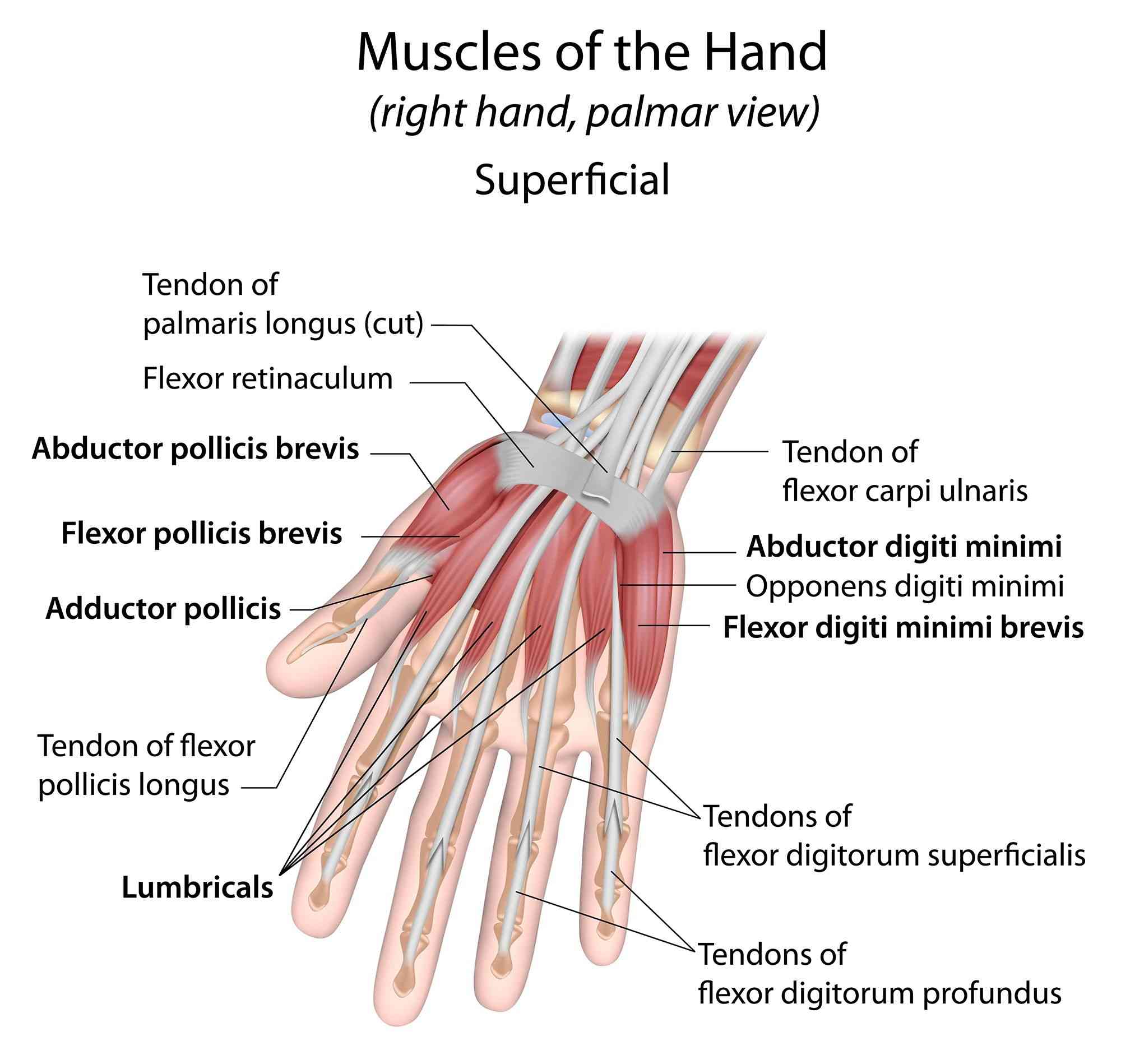
Different Types of Grip Strength
When talking about grip strength categorically, there are three main types: pinch, crush and support strength.
Pinch strength is exactly what it sounds like: the force exerted when the thumb and fingers come together when holding an object between them, such as the plate-pinch exercise in the gym.
Support strength is what comes into play when we deadlift, hang onto a bar, or hang from a pull-up bar.
Crush strength comes into play when working with grippers as well as opening a tight lid on a jar in the kitchen.
A critical factor often overlooked in training the grip is the strength of the extensor muscles on the back of the hand which open the fingers. More about that later.
What Kind of Equipment Do I Need To Improve Grip Strength?
For the most comprehensive grip, wrist, hand and forearm training routine, it is best to approach this with different training modalities, each of which will assist the highly specialized work we need to do.
Hand, Finger and Grip Strength
Hand Grippers
The hallmark of grip strength training are so-called grippers. These torsion spring design grippers work on crush grip and are the best way to develop a grip of steel.
Although there are many on the market, the most common ones are made by Captains of Crush. They sell grippers in increments from 60 to 365lbs. If you can close a 200lb gripper, you are doing pretty good already!
There are other companies selling comparable quality grippers as well. I would avoid the cheap plastic ones sold at sporting goods stores at all costs. The best out there are undoubtedly the Ironmind Captains of Crush brand.
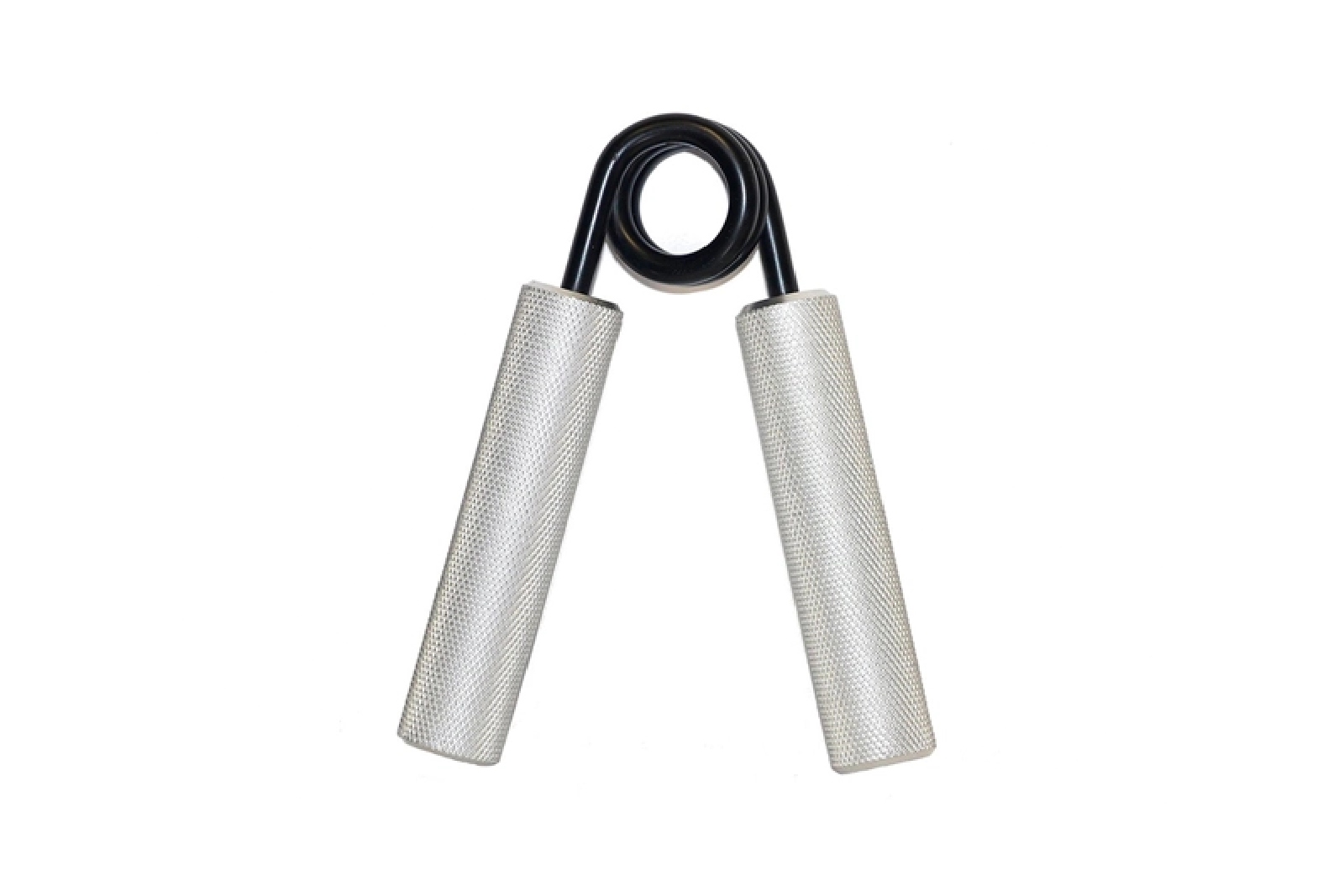
For training with grippers, it is best to keep the reps under ten and train them every other day. If training with very heavy resistance grippers, you can keep the reps low, to under 5.
Using the other hand to “assist close” is the equivalent of a cheat rep which can break through a plateau. You can also cheat close the gripper and resist the opening to get the negative.
Hand X Bands
Back to the most overlooked aspect of building strong hands - working the extensor muscles on the back of the hand. Much better than simply opening thick elastic bands with your fingers, is a specialized tool called the the Hand X Band.
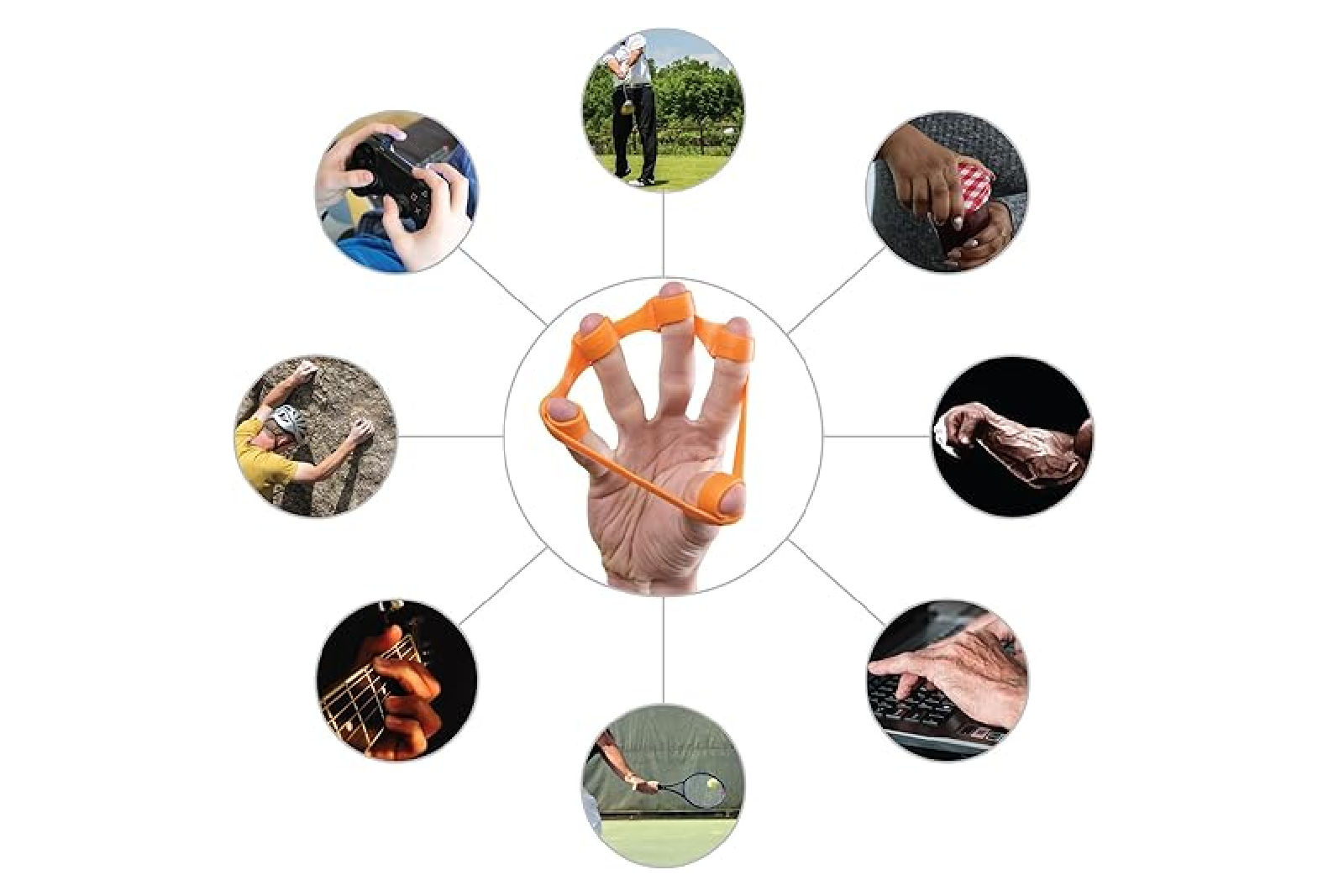
You put your fingers into each of the loops and practice opening your fingers against resistance. This is one of the best ways to avoid injuries such as carpal tunnel as well and a great assistance tool for golfers and those who play racquet sports.
Towel Hangs
As simple as it sounds, hanging from a chin-up bar from a thick towel or doing towel chin-ups is a great way to develop a grip of steel. I would highly recommend this to anyone who does Judo, as there is a carryover to gripping a towel and the opponent’s gi!
Static Bar Holds
One excellent assistance movement for the deadlift as well as working on grip strength is simply holding onto a loaded barbell for as long as one can.
You would start with a bar loaded with a weight you can hold tight for 60 seconds. Once that becomes easy you apply progressive resistance and add weight and work your way up to a full 60 second hold.
Loaded carries or “farmer’s walks” also qualify as a static hold and can be done as an alternative.
Plate Pinches
The quickest way to develop pinch grip strength easily without specialized equipment is the plate pinch exercise. Here one holds plates smooth side out and pinching them between fingers and thumb at arms length .
Hand Therapy Ball Squeeze
Using hand stress therapy squeeze balls in the palms works the intrinsic muscles on the inside of the hand, strengthening finger adduction muscles. These are great for increasing circulation in your hands and for anyone dealing with thumb arthritis and carpal tunnel.
These balls can also be squeezed in a pinch grip and between the fingers as well or between the thumb and pinky fingers.
Wrist Strength
Ulnar and Radial Deviation With Broomstick
Radial and its opposite, ulnar deviation, are vital to many sports. Radial deviation being integral to a golf swing being one example.
Towards better wrist stability, performing lateral movements - deviation - with a long broomstick will develop the soft tissue on either side of the wrist.
Finger and Palm Pulses
These will improve finger strength as well but more so aid wrist stability. One performs this best kneeling on the floor with the hands on the ground in front of them. You then put pressure through the fingers, pulsing them to move the wrists up and down.
Palm pulses are taking the range of motion of a finger pulse further so that the palm comes off of the floor to an extended position so that the hand is supported only by the base of the fingers.
With both of these it is best to perform 15-20 reps. These pulses can also be done standing over a desk as well.
Forearm Strength
Fat Gripz
For developing massive forearms and wrist strength, there is no better tool than Fat Gripz.
These grips are crafted from military grade compound similar to heavy duty rubber and are super durable and fit around any barbell, dumbbell or gym machine or pulley handle.
Perfect for doing curls, reverse curls, pull-ups and hanging from a pull-up bar as well as static bar holds (which is the best way to build support grip strength)
Wrist Roller
One of the most enduring tools to build the wrists and forearms is the so-called wrist roller. There are many on the market and one can also make one themselves with a broomstick or similar, a rope and a barbell plate.
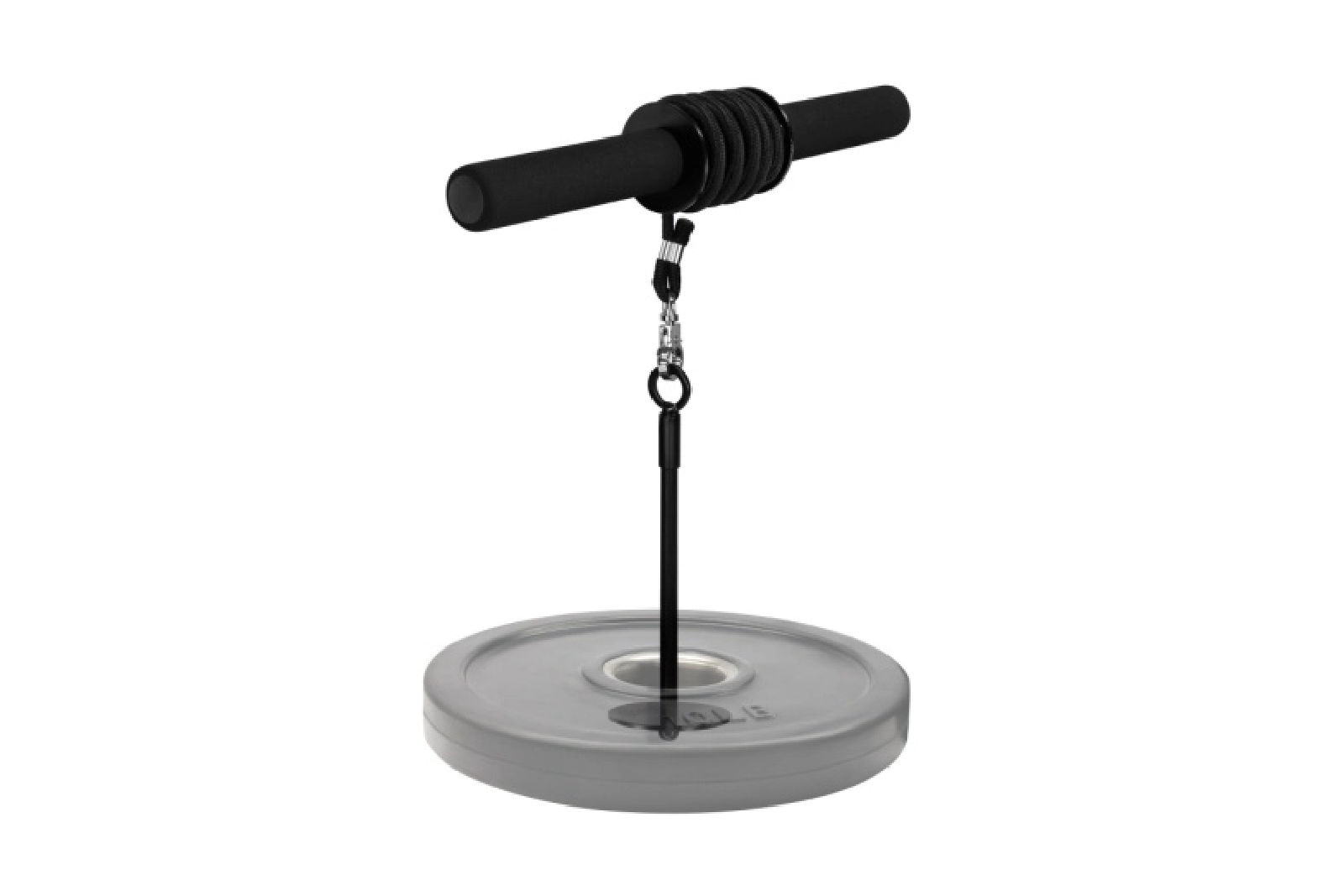
You simply hold the wrist roller out at arms length from your and roll and unroll the weight from the floor and back down. Typical use is a five to twenty-five pound plate.
Zottman Curl
A very old school movement that goes back a generation, the Zottman curl is performed with dumbbells and works the biceps, brachialis and brachioradialis, as it combines a curl in the concentric part and a reverse curl in the eccentric, downward part.
At the top of the curl movement, the hands flip over to a pronated position and the weight lowered.
Sample Grip Strength Routine
What follows will work your fingers, hands, grip, wrists and forearms sufficiently. I would recommend doing this 3 times a week.
Hand Grippers: 5 sets of 5 reps; 2-3 second holds
Zottman Curls: 2 sets of 15 reps; 2 seconds up/down, 2 second hold
Plate Pinches: 2 sets of 15-20 second holds
Towel Hangs: 2-3 sets of 20-30 second holds
Finger Extensions: 3 sets of 20-30 reps with Hand X Band or thick elastic bands
Palm Pulses: 2 sets of 10-30 pulses up and down
